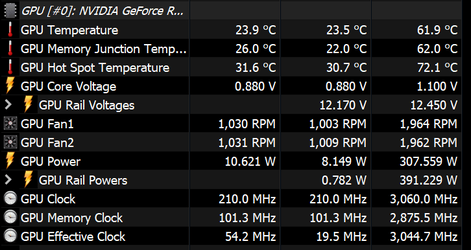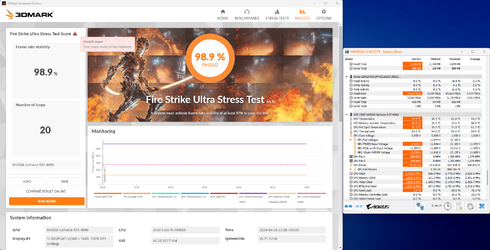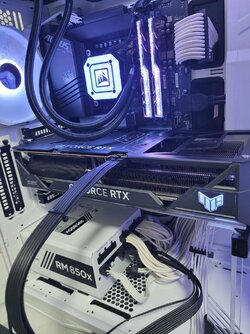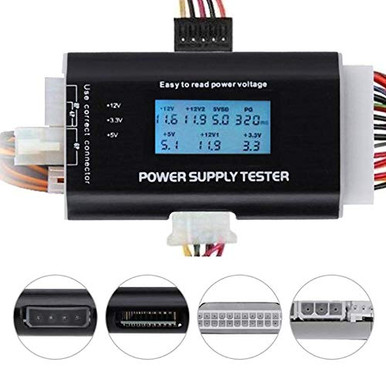Hi guys.
I recently did some tests with my 4090 with Corsair HX1200 & Corsair RM850x. The nice thing about those PSUs is that they use the same cable kit, so going back and forth between those PSUs is very easy without disconnecting anything from the actual components.
One difference I noticed between the two PSUs is by how much the GPU Rail Voltage varies. Running the same stress test loop, the two PSUs dropped to slightly different minimal values under load.
The Corsair RM850x varied from a range of 11.693V to 12.104, while the Corsair HX1200 varied from a range of 11.617V to 12.149V (See GPU Rail Voltages on the two screenshots below)


I know that the standard on those is +-5% which is something in the range of 11.4V - 12.6V, so both PSUs are fine and within range, but I'm wondering whether this value indicates which PSU has more reliable 12V rails. Doesn't the RM850x beat the HX1200 in this category, since it has lower variance?
If not, is there another category that I can test that will indicate which PSU has a more reliable 12V rail?
Thanks!
I recently did some tests with my 4090 with Corsair HX1200 & Corsair RM850x. The nice thing about those PSUs is that they use the same cable kit, so going back and forth between those PSUs is very easy without disconnecting anything from the actual components.
One difference I noticed between the two PSUs is by how much the GPU Rail Voltage varies. Running the same stress test loop, the two PSUs dropped to slightly different minimal values under load.
The Corsair RM850x varied from a range of 11.693V to 12.104, while the Corsair HX1200 varied from a range of 11.617V to 12.149V (See GPU Rail Voltages on the two screenshots below)
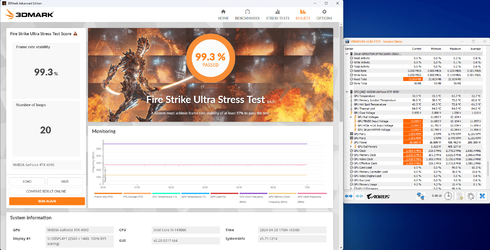
I know that the standard on those is +-5% which is something in the range of 11.4V - 12.6V, so both PSUs are fine and within range, but I'm wondering whether this value indicates which PSU has more reliable 12V rails. Doesn't the RM850x beat the HX1200 in this category, since it has lower variance?
If not, is there another category that I can test that will indicate which PSU has a more reliable 12V rail?
Thanks!
